Welcome to my travel blog where I share my incredible experience of visiting the stunning Durga Temple situated in the ancient town of Aihole in Karnataka, India. This temple is a true architectural masterpiece and is a living testament to the rich cultural heritage of India. The temple is dedicated to Goddess Durga and is believed to have been built during the Chalukya dynasty. The temple’s intricate carvings and exquisite sculptures are a testament to the outstanding skill and craftsmanship of the local artisans. As I entered the temple, I was captivated by its stunning beauty and the sense of peace that permeated the air. Join me on my journey as I take you on a virtual tour of this incredible temple and explore the rich history and culture of Aihole.
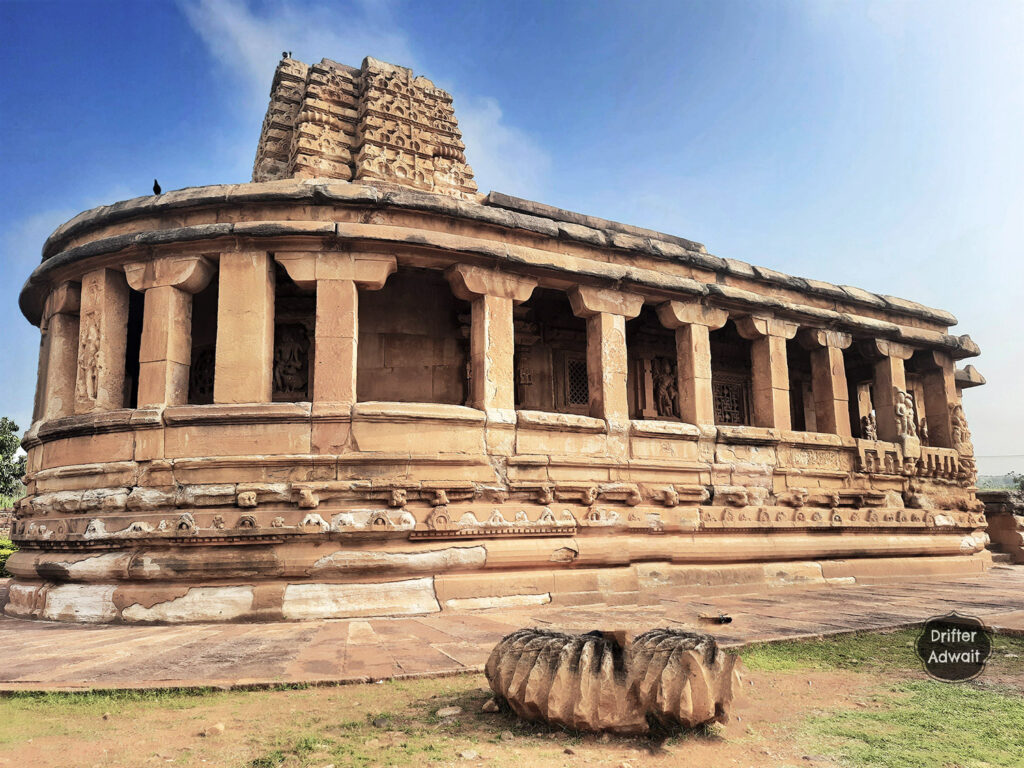
Indian temples have two main types and several architectural sub-styles. But how do you differentiate the Indian temples? Look at their Shikhara, outer layers, Mandapa, circumambulation path, Vigraha style, etc. But what if the temple was built during the times all these defining characters were developing? Additionally, how do you support your claim when the temple has been dismantled by the barbaric invaders who arrived from the desert?
Badami is considered the cradle of temple architecture. This line has been used so often that it might have lost its true impact. But when you go on a temple spree here, these ancient ruins grab your attention and force you to think about that marvelous time in which the temple building science had begun to take a specific shape. It does not just amuse you but adds a few more cents to your confusion.
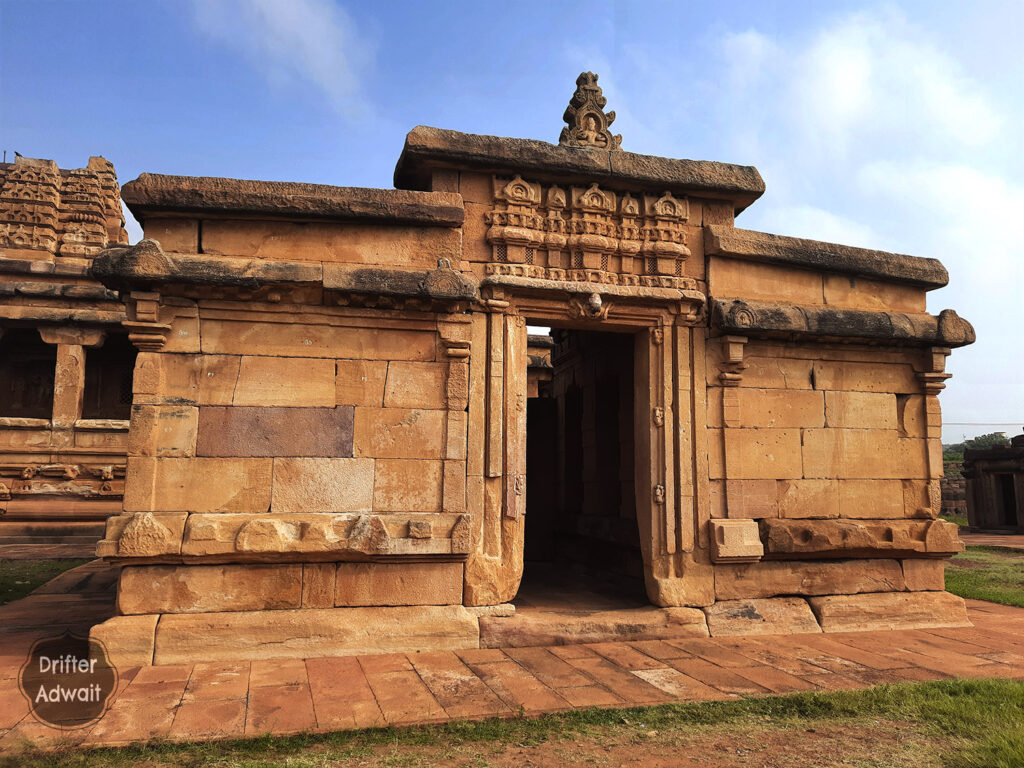
Durga temple is one of the most important temples in the Aihole complex. Built-in the pinkish granite stone, this temple has an outer shape like the back of an elephant (Gaja prushthakar). Interestingly, the temple has two Parikrama paths. One with plain walls and the outer one with brilliant sculptures.
Temple has rather exciting nomenclature. Initially, its believed to be a temple dedicated to Narayana (Vishnu). Then, being closed to the Durg (fort) wall, it was known as the Durg temple. When the temple ruins were rediscovered, due to the vague similarities with Buddhist Chaitya Gruha or due to their agenda of divide and rule, a British expert declared it a Buddhist monument. Later, with the help of a newly found inscription written in 700 CE, KV Ramesh and S Padigar proved it to be the Aditya (Surya) temple.
Durga Temple Aihole Architecture

Like most temples, you cannot enter the temple facing the main deity. Instead, the architect has made two entrances in the north and south directions. Believed to be built in the seventh century, the temple is constructed on the Adhishthana (platform). Many outer temple pillars have been decorated with marvelous sculptures. Many of the posts are decorated with couples embracing each other. At the bottom of many pillars, you will find the team of Kubja Ganas (Shiva Disciples), dancing, singing, and playing different contemporary musical instruments.

When you stand inside the Mandapa facing the sanctum sanctorum of the temple, you get mesmerized by the complexity of the multiple components engraved on the ceiling. The ceiling has been divided into two equal parts. Part closer to the entrance has been engraved with a giant wheel and spokes made up of fishes, surrounded by the lotuses. Both fish and the lotus are the Lanchhanas (icons) of Lord Vishnu.
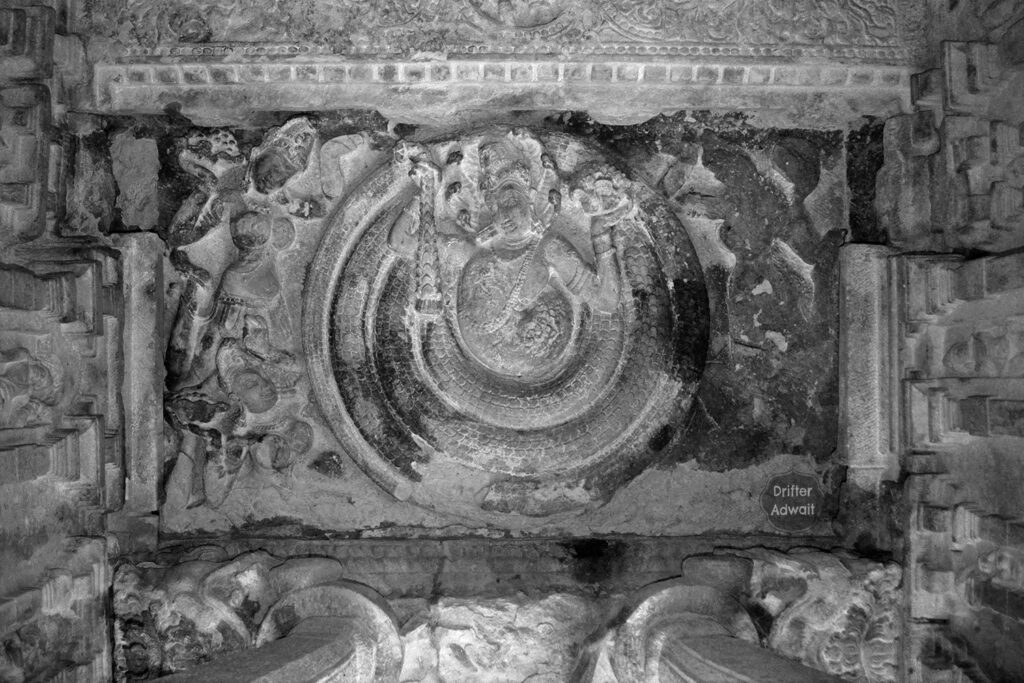
The second part of the ceiling is dedicated to Shesha. This is one of the most beautiful ceilings you will ever see in your life. Shesha’s head is covered with seven-headed Naga. He is wearing minutely crafted ornaments on his ears, neck, wrists, and shoulders, along with a beautiful crown. In their left hand, he is holding an offering in a bowl, and in another hand, he is holding his rattle snake-like tail. He is surrounded by the rotations of his own tail, with beautiful scales engraved on it. He has long ears, and his lips depict a smile. The lord of Snakes represents the endless loop of creation and destruction of the universe. Shesha is surrounded by four gorgeous smiling women holding the offerings.
Usually, pillars are connected to the ceiling, and Bharavahakas carry the roof load. But here, the top of the two pillars is taken out and connected to the ceiling top, with semi-circular holders coming to and fro from Makara’s, supporting the ceiling bar.
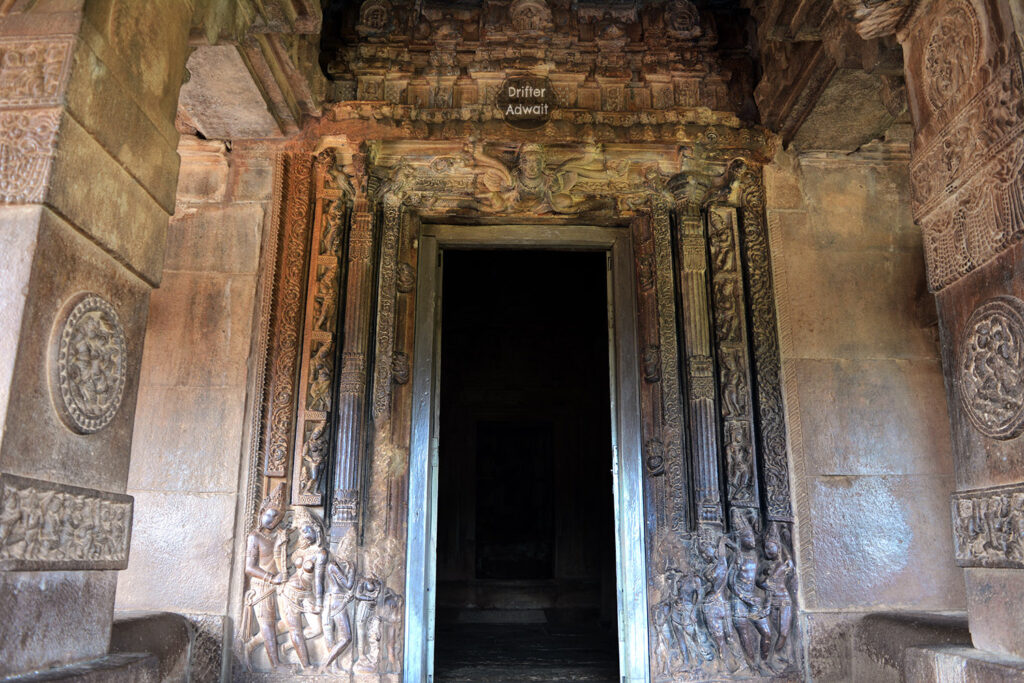
There are some exquisite door frames to the sanctum sanctorum of the temple. Called Dwarashakhas, you will find five-door frames bracketing each other beautifully. At the bottom of each frame, beautiful doorkeepers welcome you inside the temple. The innermost frame is made up of the Nagas. This door frame is beautified with the scales and Nagas saluting the Divine. The second frame is adorned with flowers, mangos, and vines. The third frame comprises a pillar-like design containing Kalasha and Shardul animals. Fourth, Dwarashakkha is adorned with beautiful women trying to distract you from your goal, the Lord Suryadev. The outer frame is made up of nongeometrical patterns. If you are a tall person, your head almost touches the door frame. The place where your head feels the doorframe is called Lalatabimba. You will see Garuda, the vehicle of Lord Vishnu, holding all these doorframes in his mighty hands like he is holding snakes.
Not to miss in the Temple:
On the outer circumambulatory path, you will see these defining features.
Swastika Watayana: Windows serve two functions, bringing the light and fresh breeze through the thick walls of this temple. Many believe that the Divine watches over us through these openings, and hence, all they need is small openings.
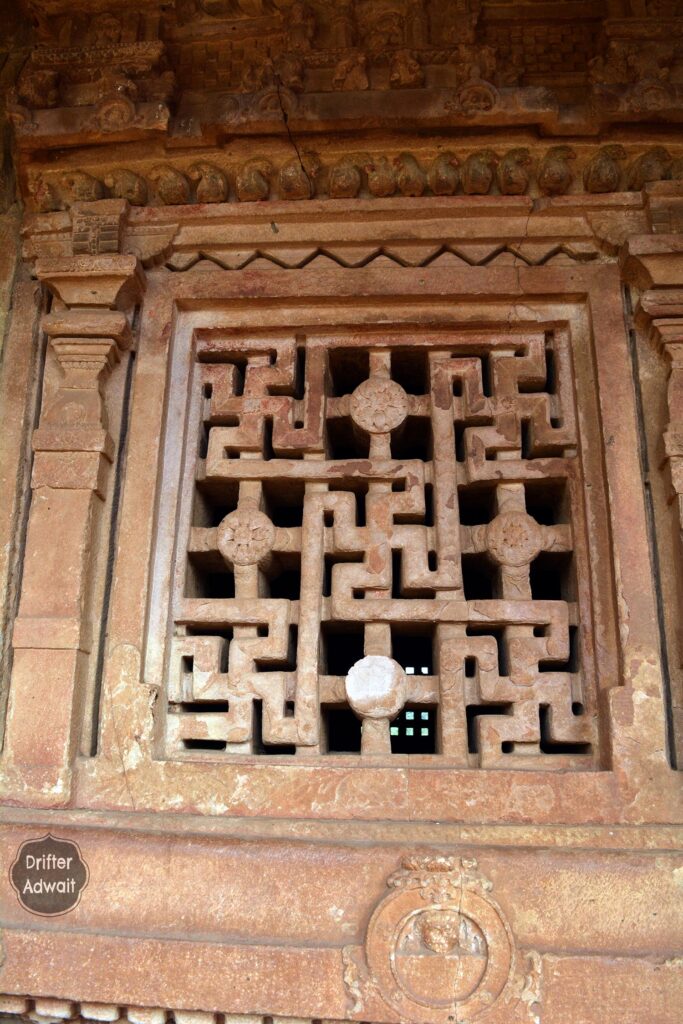
Mahadev: Here, eight-handed Mahadev is railing on Nandi. He is a depiction of word effortlessness. Round-faced Mahadev has closed eyes and is carrying the moon on his crown. He is wearing beautiful ornaments, but the most interesting is what he is wearing on his thighs. He is wearing tiger skin on his hips, and you can identify it by the head on his right leg. Mahadev has knotted the right front and left hind leg of the tiger skin on his front gracefully.
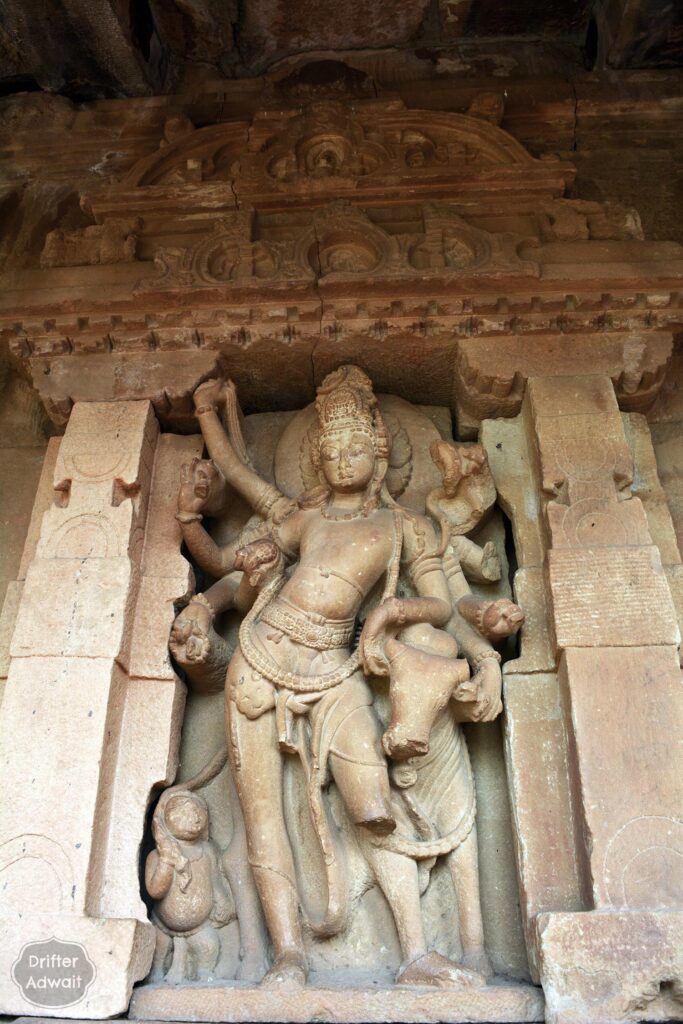
Vitana with Ganga and Yamuna: This one is a unique window. Usually, the temple windows do not have frames like a door. But this window has two beautiful door frames with Rived Ganga and Yamuna at the bottom. Ganga is standing on the Makara and Yamuna on the turtles. Each of them is holding a pot of water. The inner window frame comprises snakes, and the outer one is made from flowers with four petals. Where there are snakes, there shall be Garuda. On top of the door frame, you can see Garuda controlling the snakes.

Vijaya/Kewal Nrusinha: After killing demon Hiranyakashipu, he relaxes. He is also called Kewal or Vijaya Narasimha. This Vigraha has astonishing similarities with the one in the Badami caves. He is railing on his mace, and we can see a beautiful conch shell in his other hand. Unfortunately, all the other hands have been broken, or it would have been a true masterpiece.
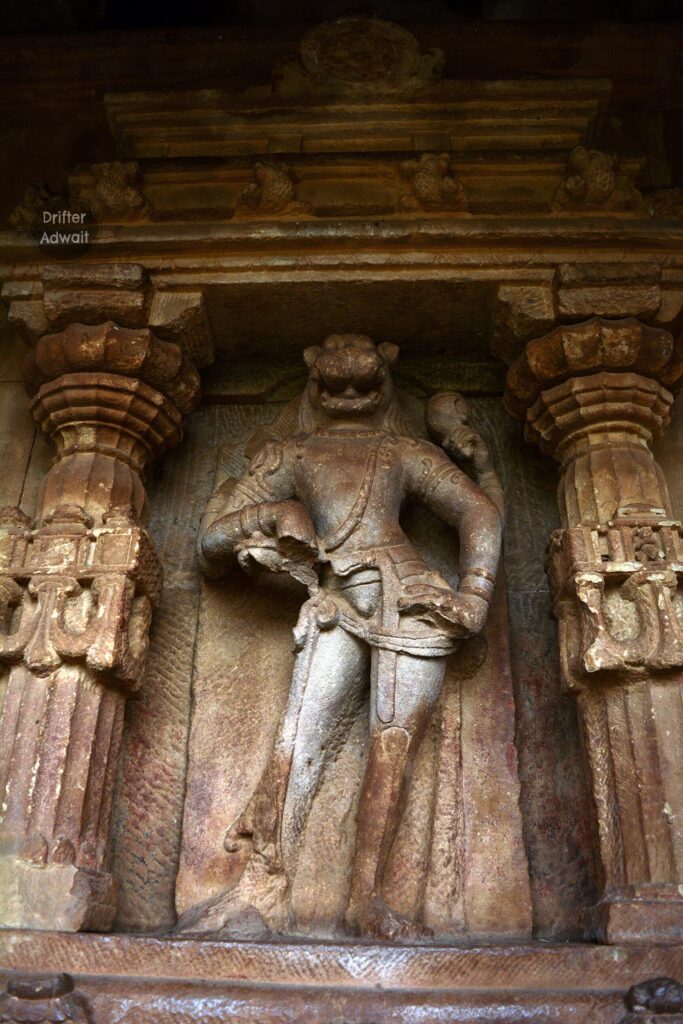
Vishnu: Four-handed Vishnu is standing rather than riding the Garuda. Here, Garuda is depicted in anthropomorphic form, resembling a curly-haired baby or more like a cupid. The feather in its wings is flattering to the wind. He is looking at his master with pride. Round-faced four-handed Vishnu is standing on him rather gracefully. His one foot is touching the ground, and the other has been broken. Even though damaged, the sharpness of the Sudarshan chakra is something you should imagine. On the other hand, he is holding the Panchajanya Shankha. You can see Mother Lakxmi on his left. She is the best to be admired. Standing almost in Tribhanga style, one hand is on her heart, maybe holding a flower. Her crown is simply gorgeous, and the folds of her Uttariya are carved splendidly by the sculptor. Her face reflects a mixture of pride, peace, and contentment.
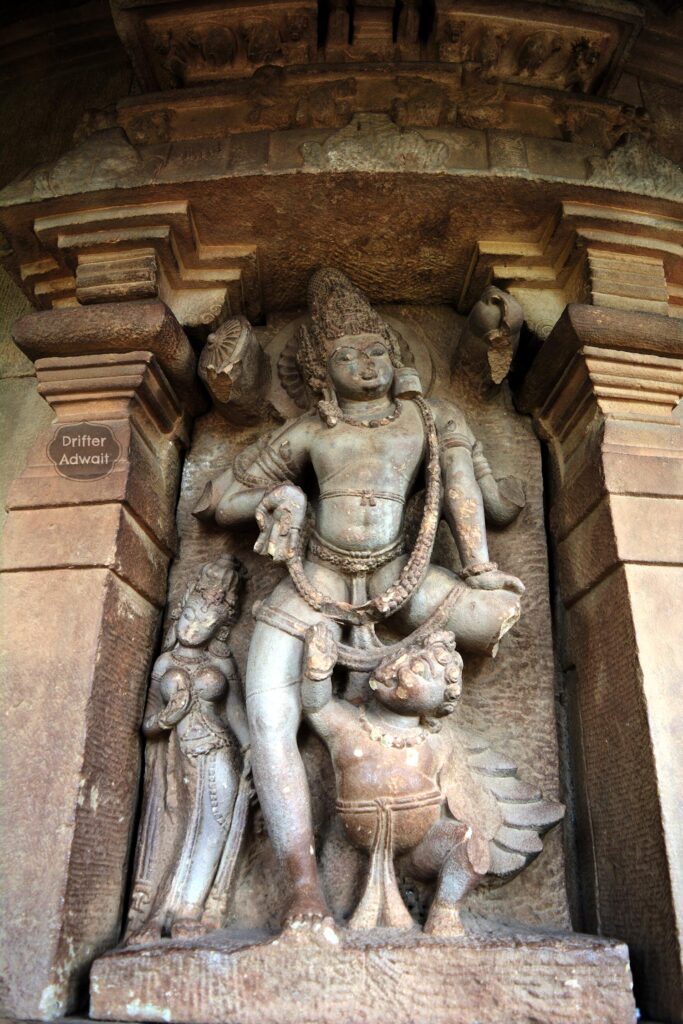
Varaha: Varaha is lifting Bhudevi in the air. He has rescued her from the demonic clutches of Hiranyaksha. The way she is taking support from the broad shoulders of Lord Varaha says a lot about this whole situation. Varaha’s lower right hand is rested on his thigh, and his upper hand is holding his legendary and fearsome Sudarshan disc. But the thing we need to admire here is Shesha and his consort Nagalakshmi. Shesha has supported the ascent of his lord, and he has helped the Varaha to lift the Bhudevi. The pattern on his endless tail is simply astonishing. His head is hooded with the three-headed cobra. Shesha is saluting his master, but we will never be able to guess his facial expressions, as they have been wiped out by the invaders.

Mahishasur Mardini: Do you want to experience the true power of the divine feminine? Look at this sculpture. Eight-handed Mahishasur Mardini kills the buffalo demon. You can feel her wrath by the way she is standing. From whatever has remained, we know she is holding an arrow, disc, mighty trident, and a bell. Her righteous right foot is grounded firmly, and her left foot puts pressure on that buffalo. It’s said that the fight went on for nine days, and finally, she killed that demon with her trident. Despite fighting for nine nights, she has killed the demon effortlessly, and that’s been reflected on her smiling face. Mane of her lion folds on the thick skin of buffalo, and its flared nostrils are worth observing.
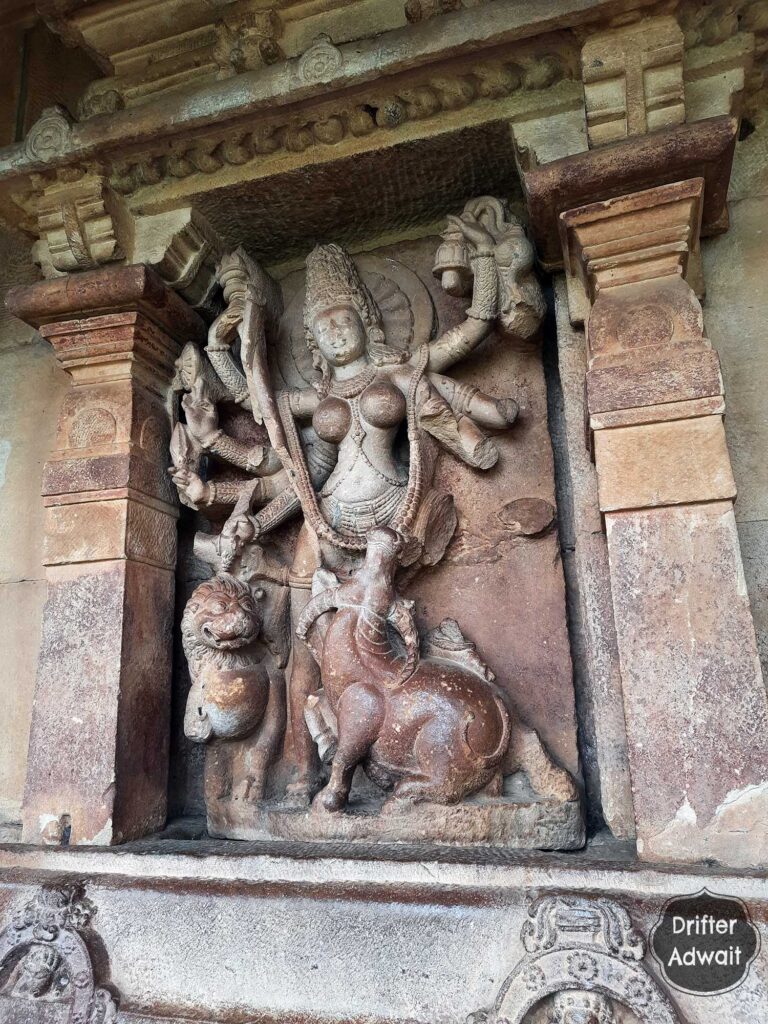
Harihar: Harihar is the combination of Hari (Vishnu) and Hara (Mahadev). To show that there is no difference between these, the sculpture has combined both these celestial powers into one. Harihara is holding a Sudarshan Chakra and the conch.
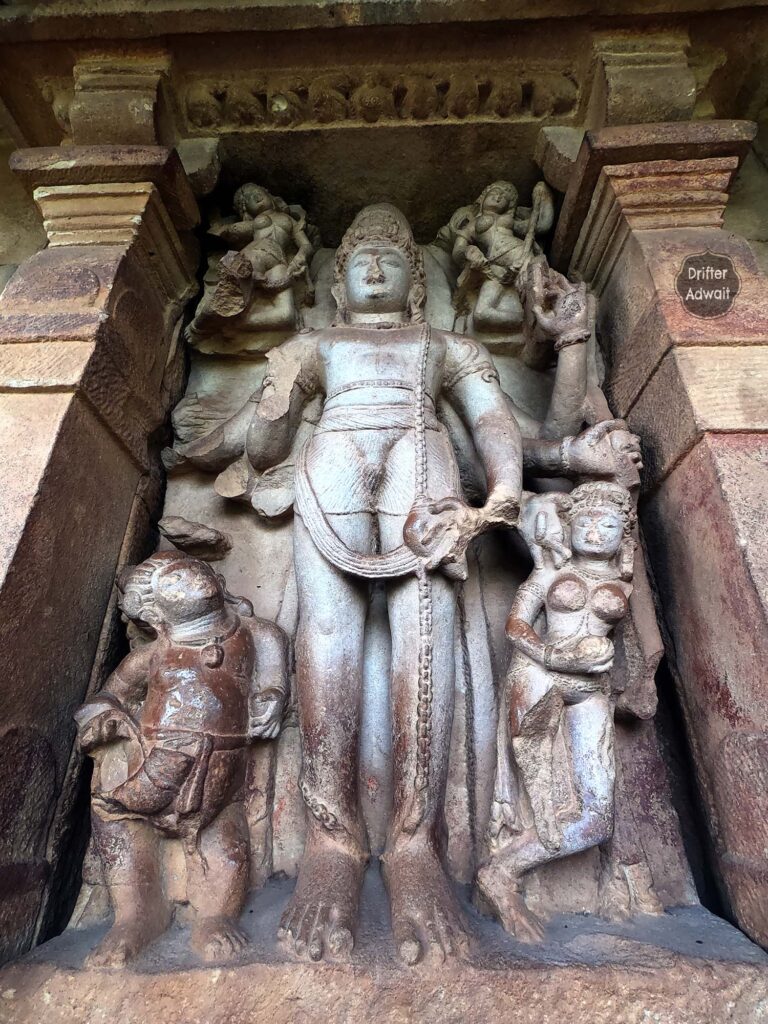
How to reach Aihole Durga temple?
? By car: Aihole is a remote location, only accessible by road. It’s about 35 km from the town of Badami, Karnataka.
? By Bus: Bi-hourly buses are available from Badami bus station. The town of Badami is well connected with buses coming from Hubbali and Belgav.
✈️ By Airplane: The nearest airport is Hubli, about 140 Kms from the site.
? By Train: Badami is the closest railway station, which is 35 km away from Aihole.
?️ Places to stay at Aihole: Being a small rustic town, there are very few options available for visiting Aihole. The only hotel available in KSTDC Mayura Yatri Nivasa, just 400 meters from the location. The town of Badami has plenty of options available to stay.
Being one of the very first temples laying the foundations of temple architecture, Durga temple has a lot to offer for the students of temple architecture. Even though Aihole has several temples on its site, this temple is unique in many senses. Being the first temple in the complex, we tend to overlook it for a bit as we have to cover many temples like these, but I suggest you take your time here and grasp a few new things. Have you visited this marvelous temple? What Vigraha is your favorite? Please tell me in the comment section.
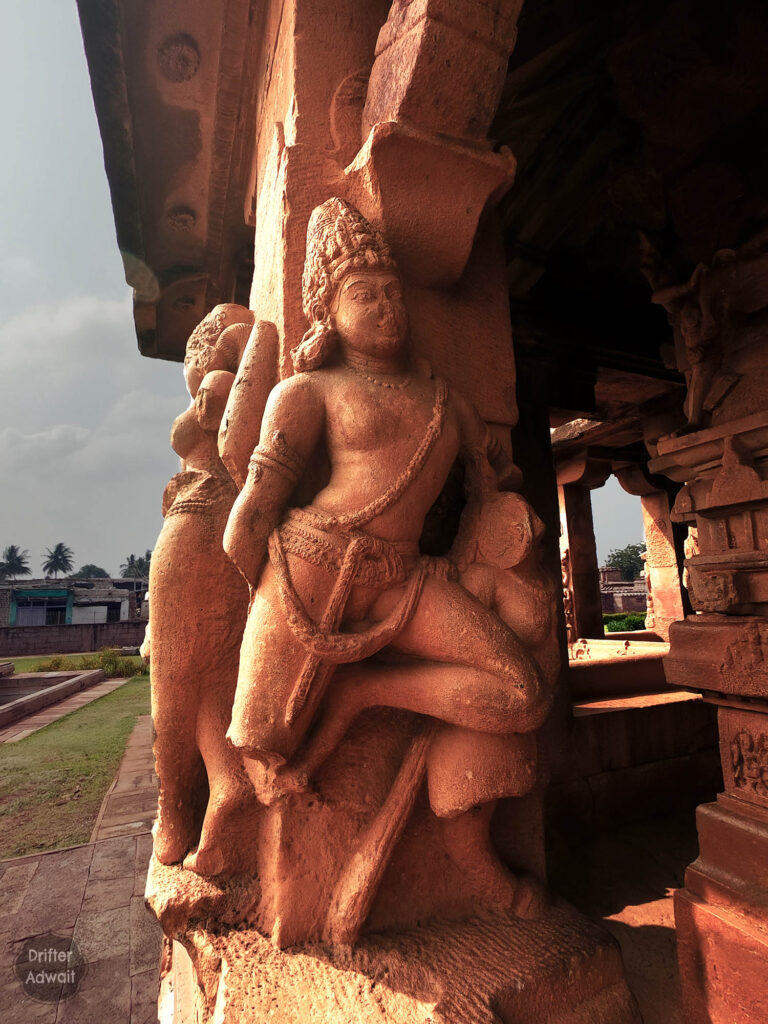
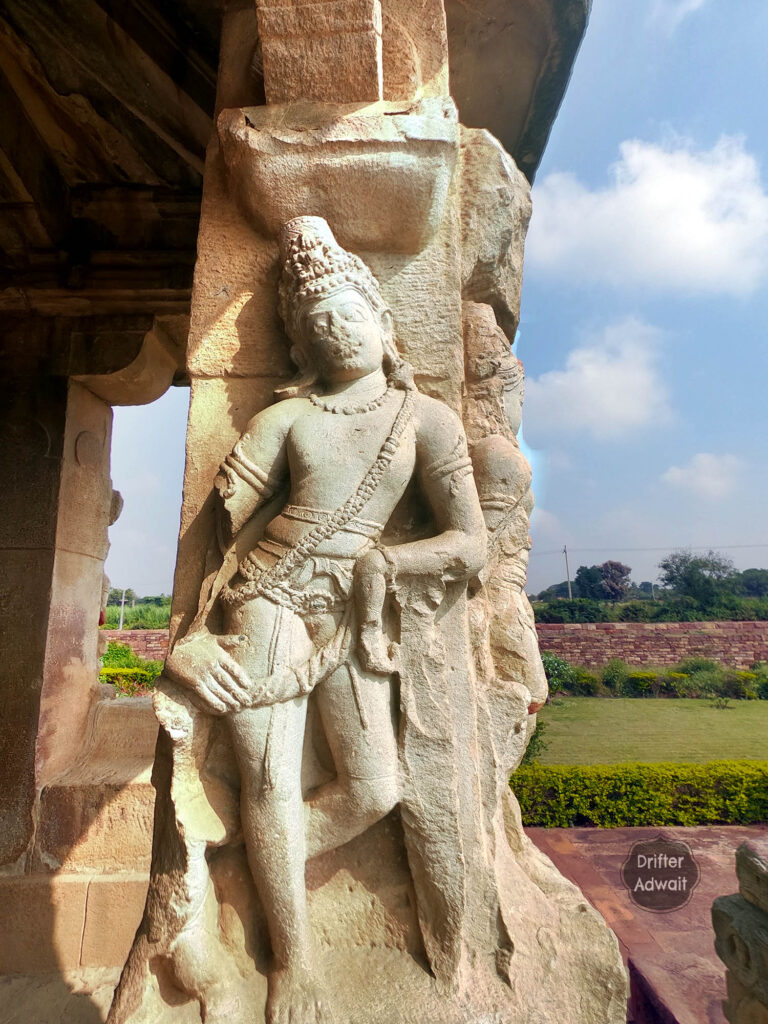
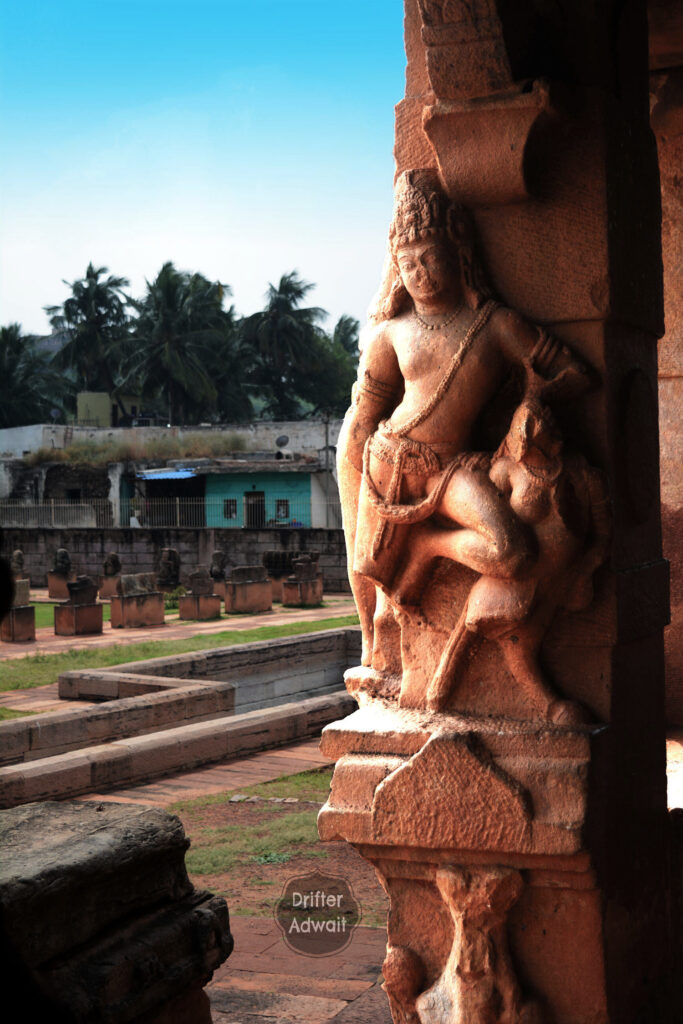

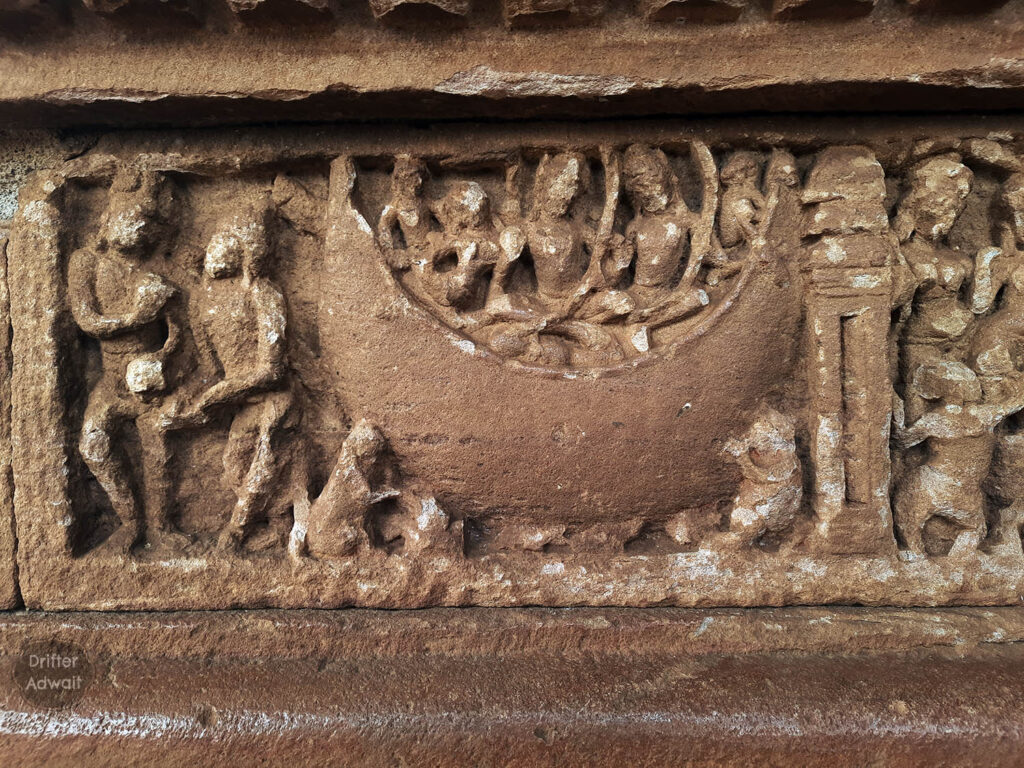
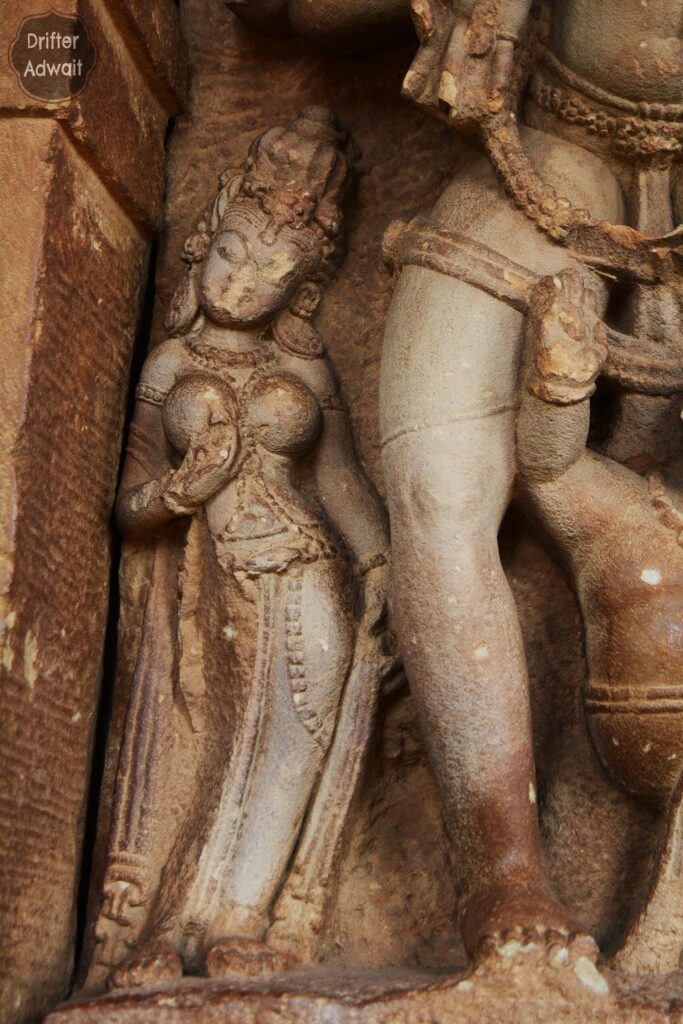

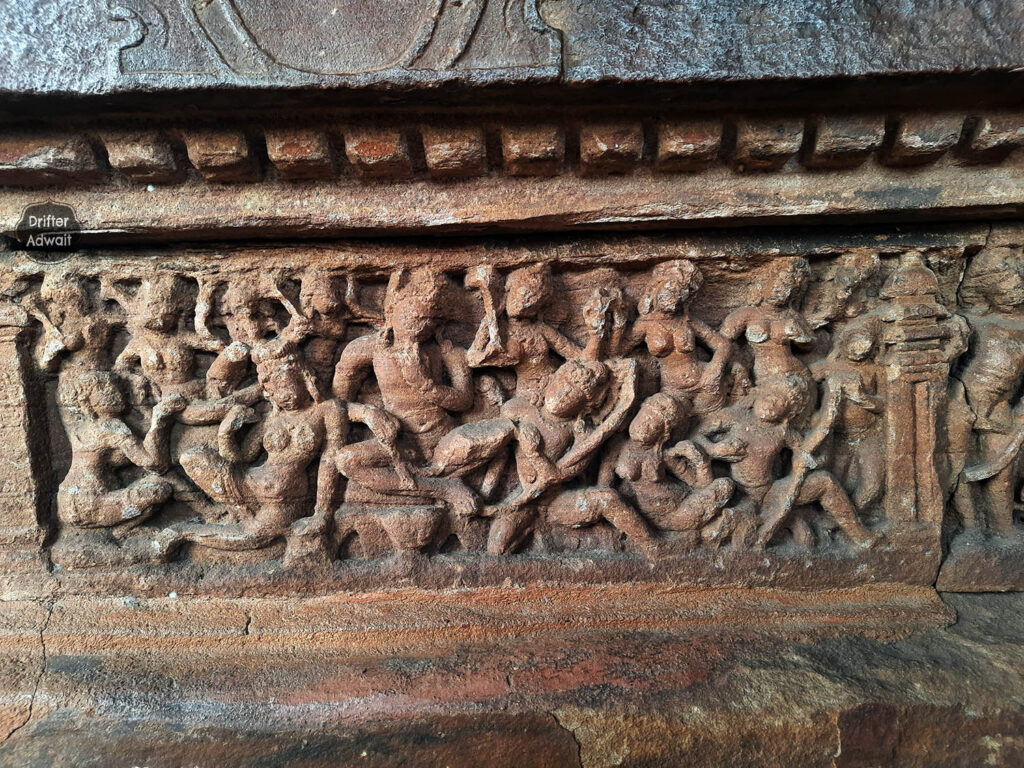
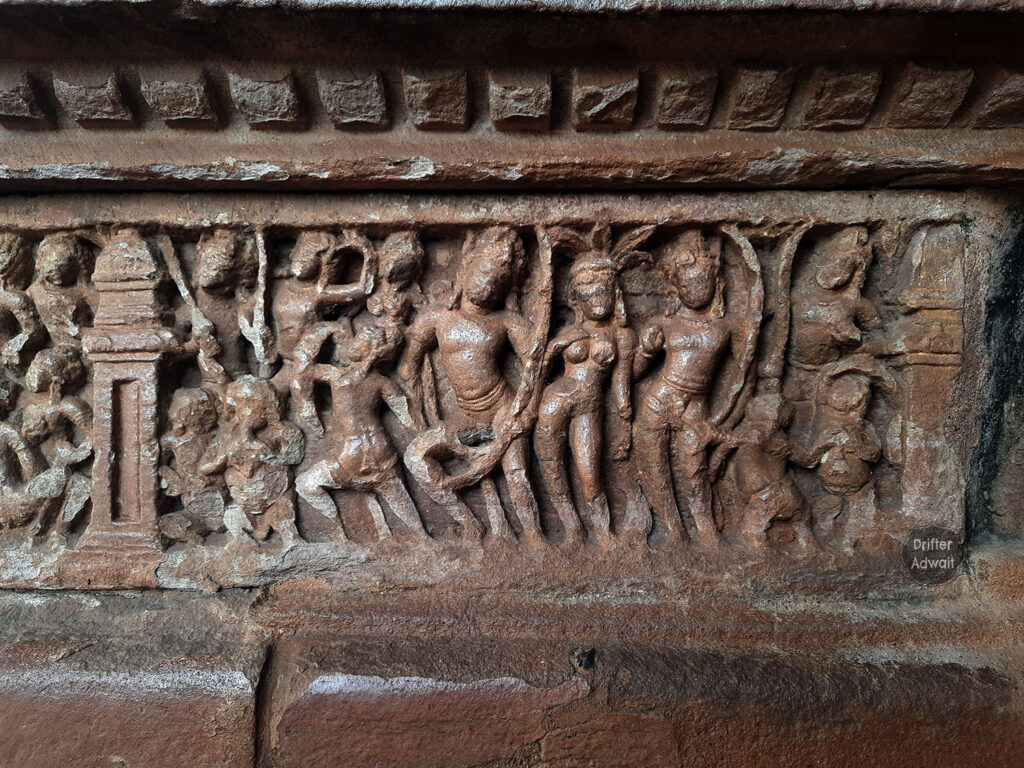
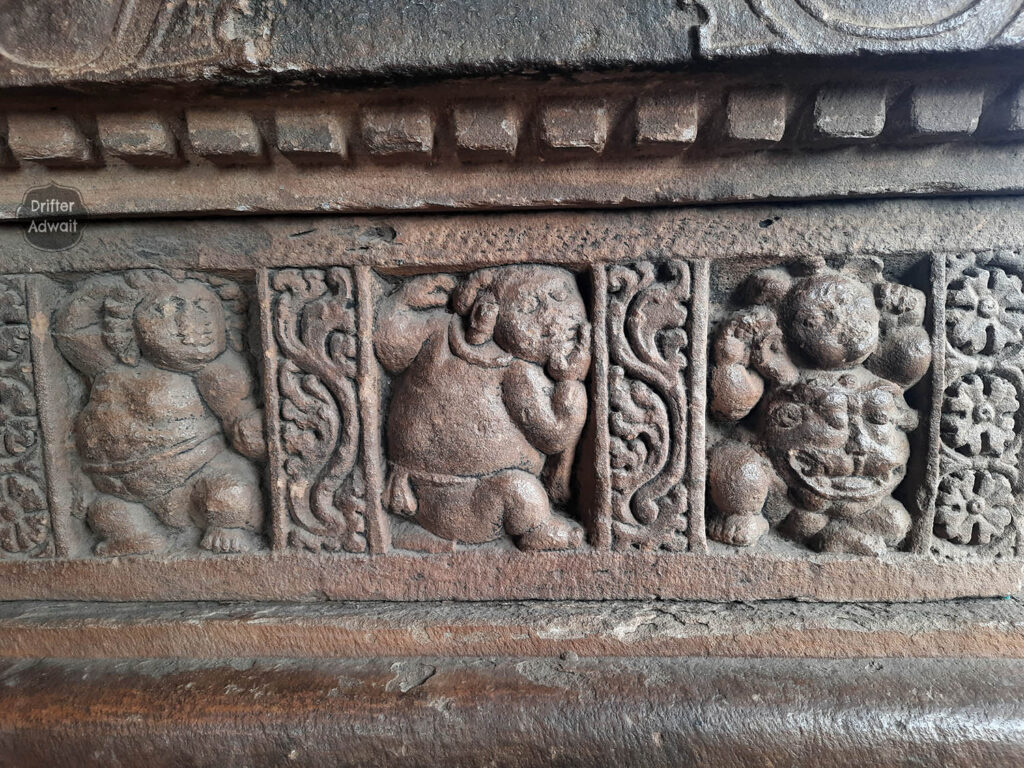
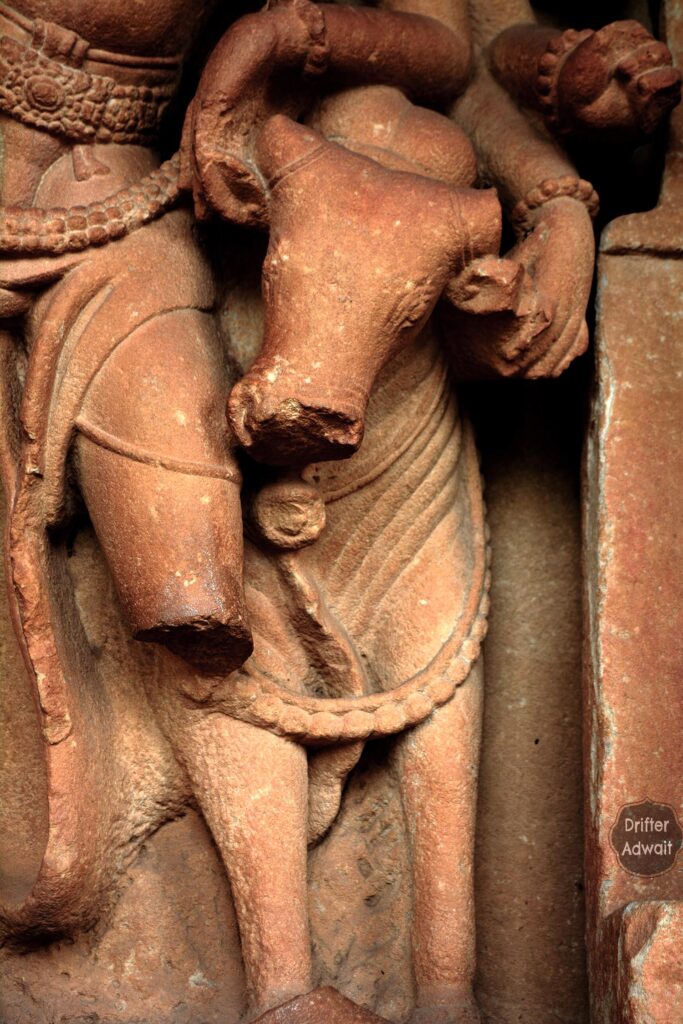
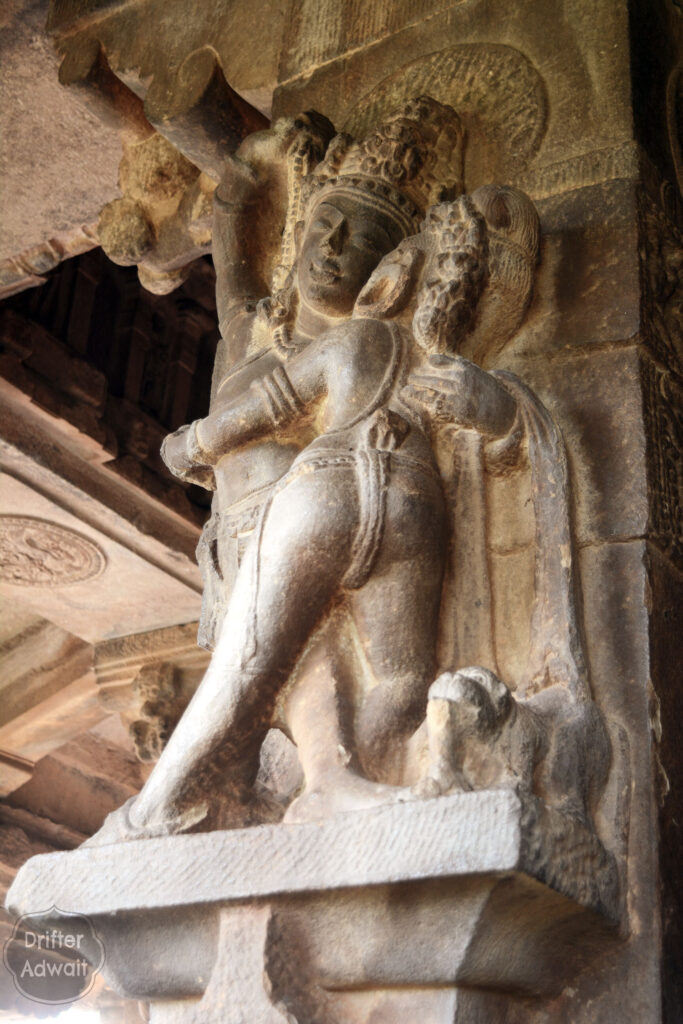


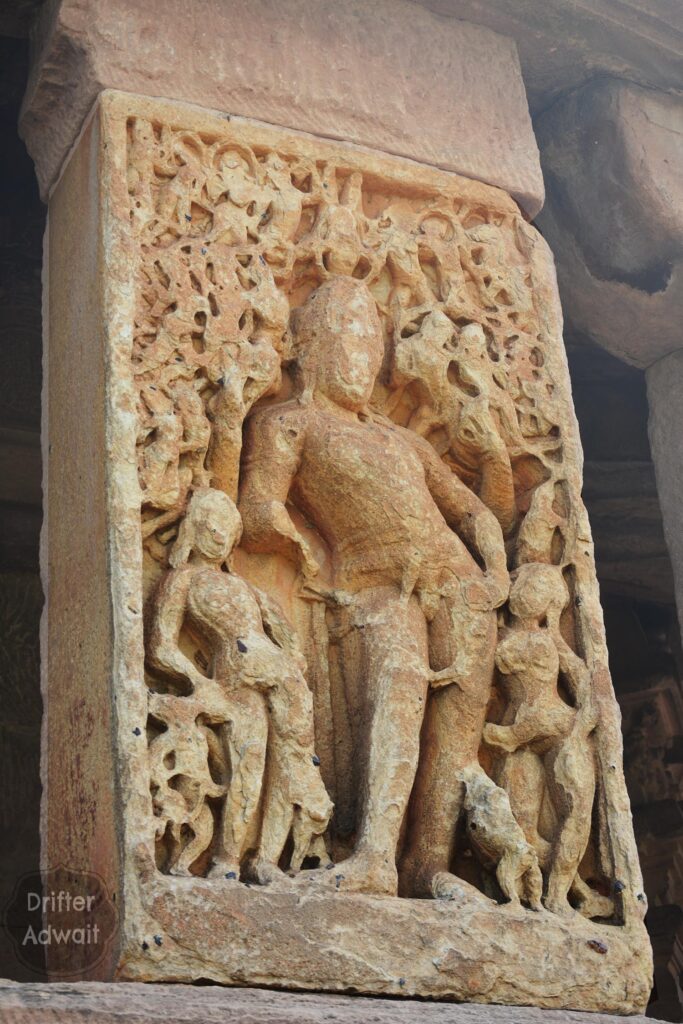
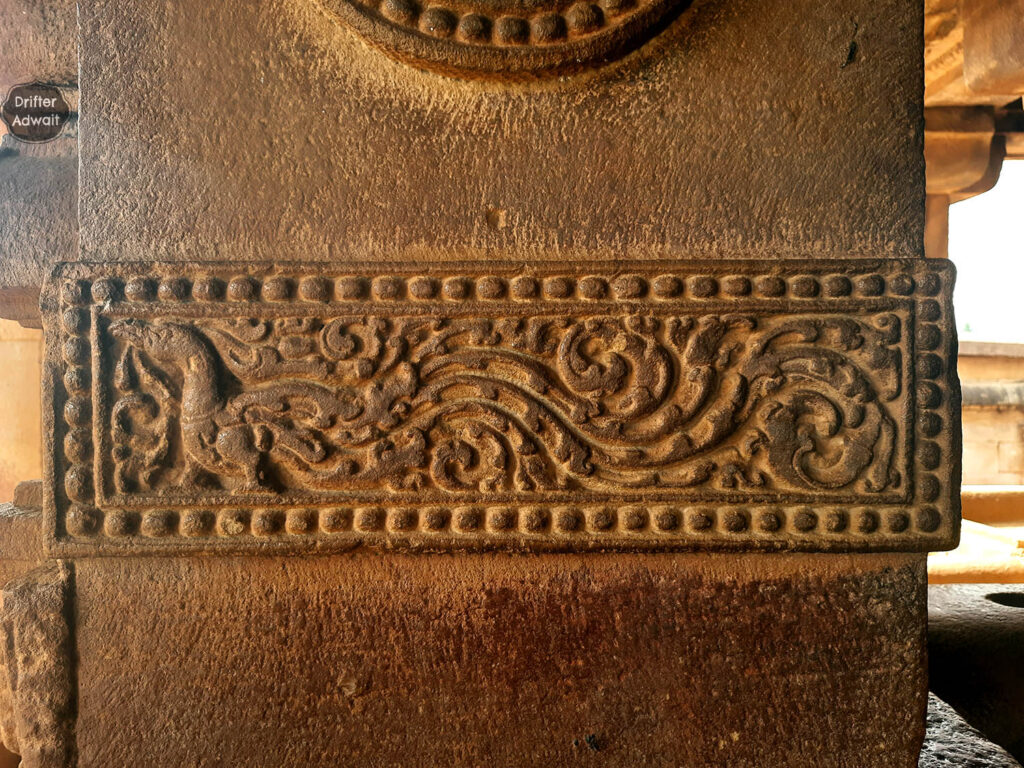
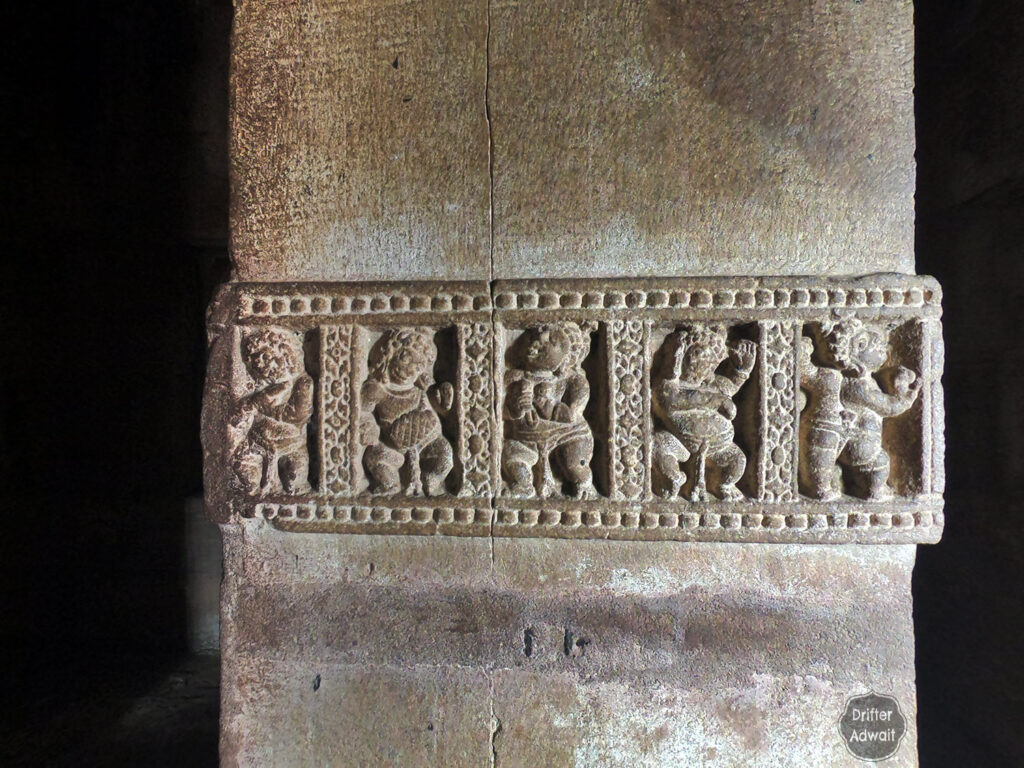
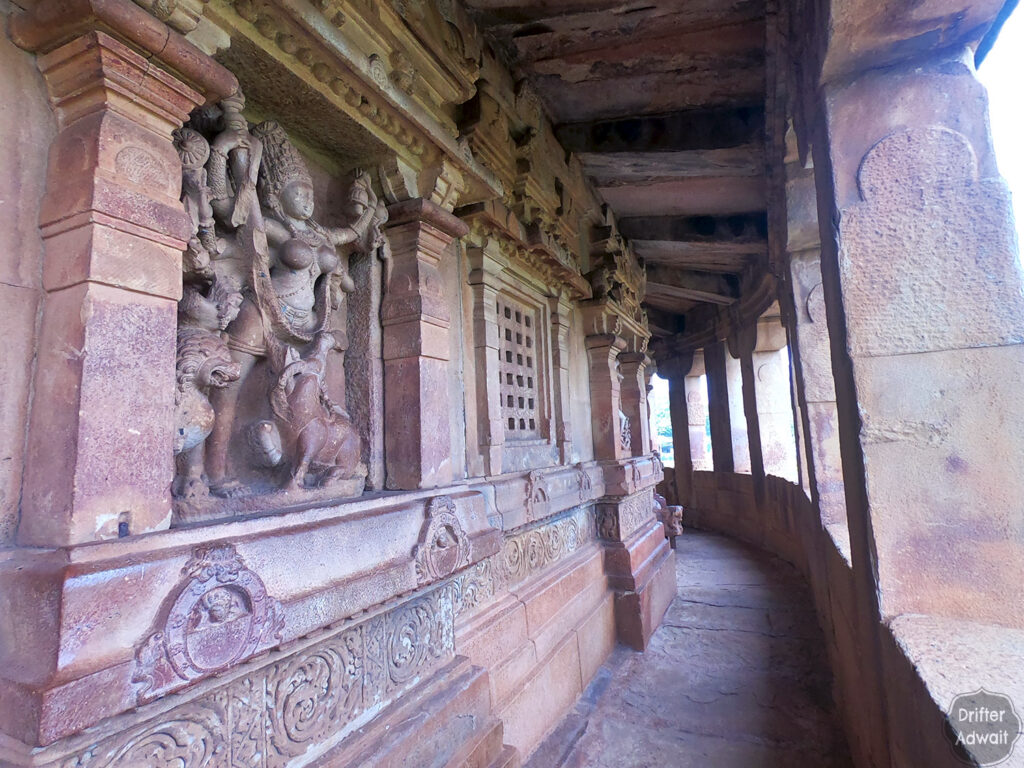
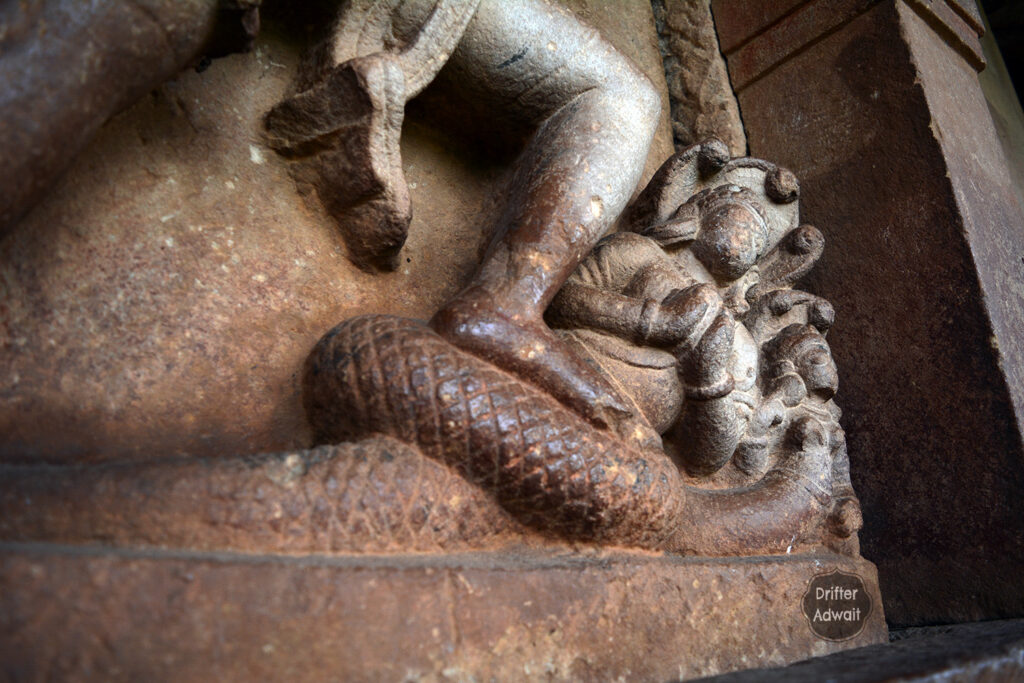
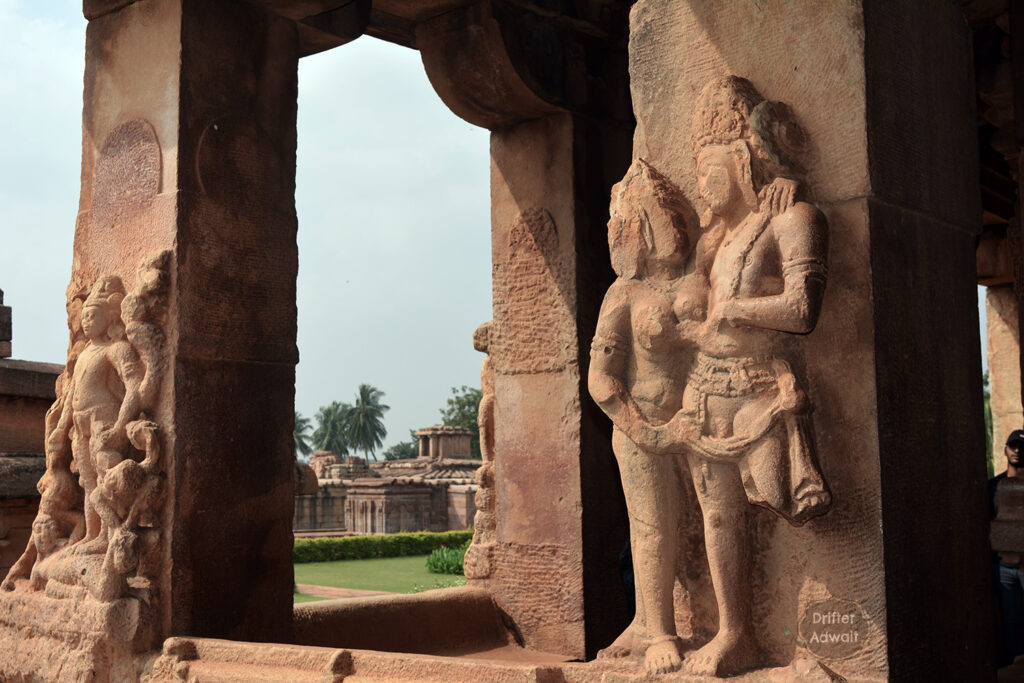
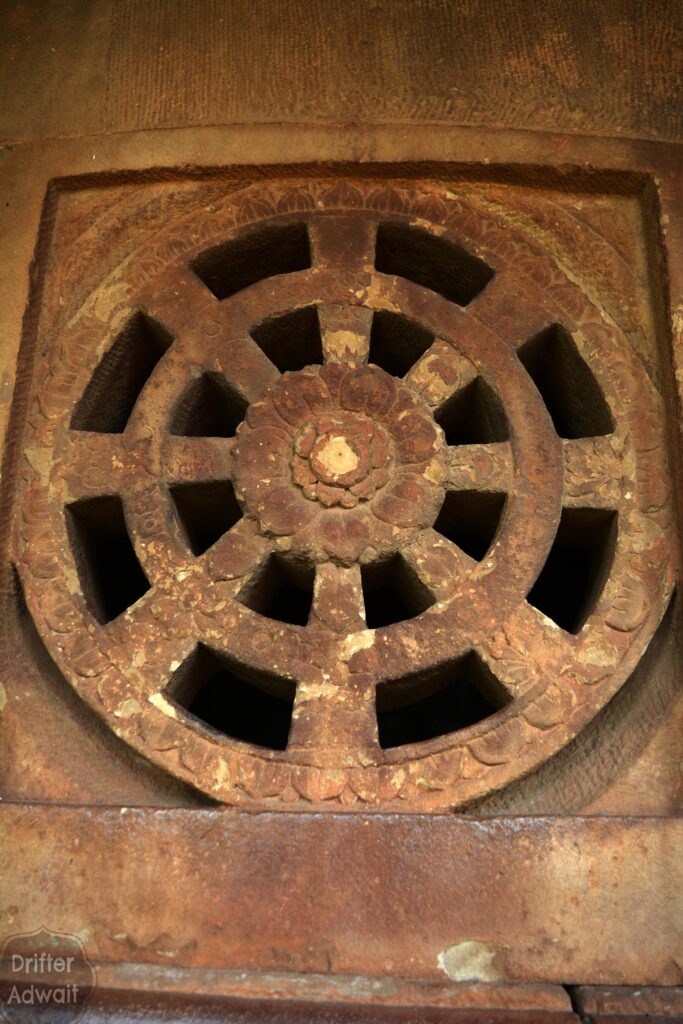
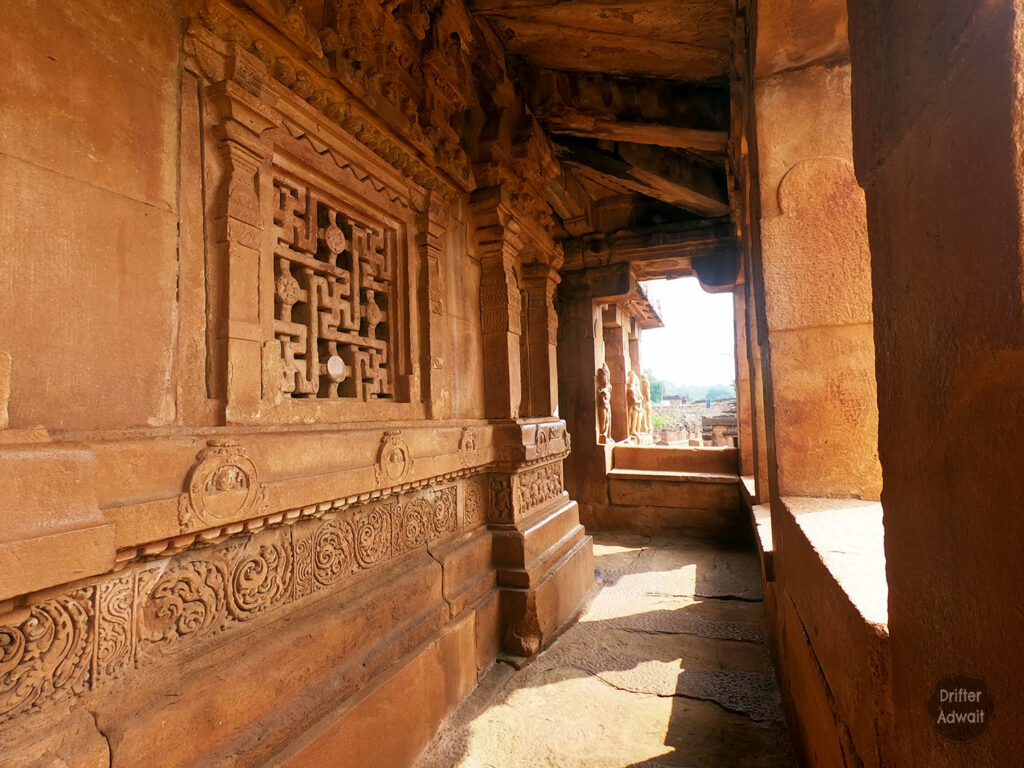

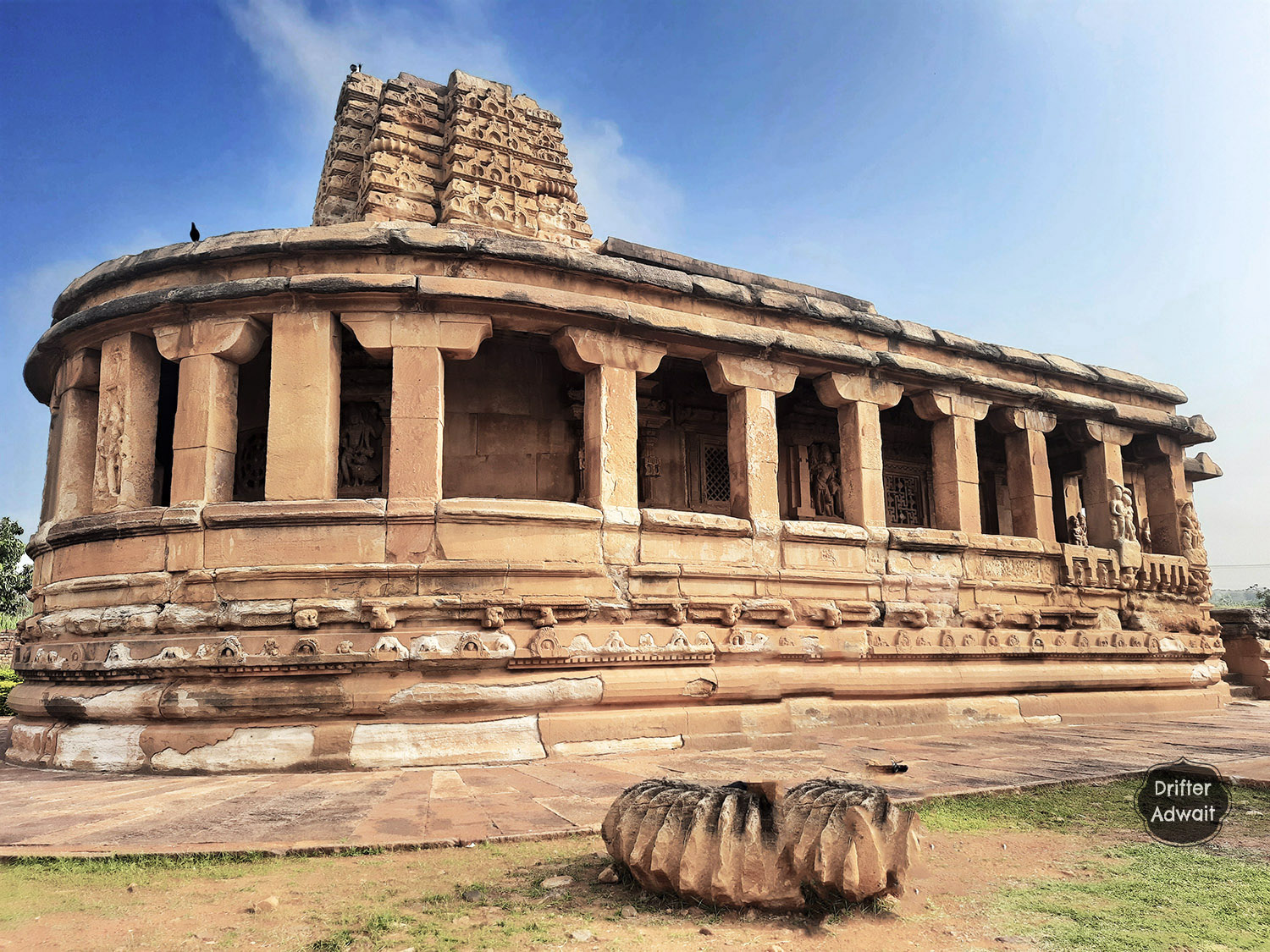
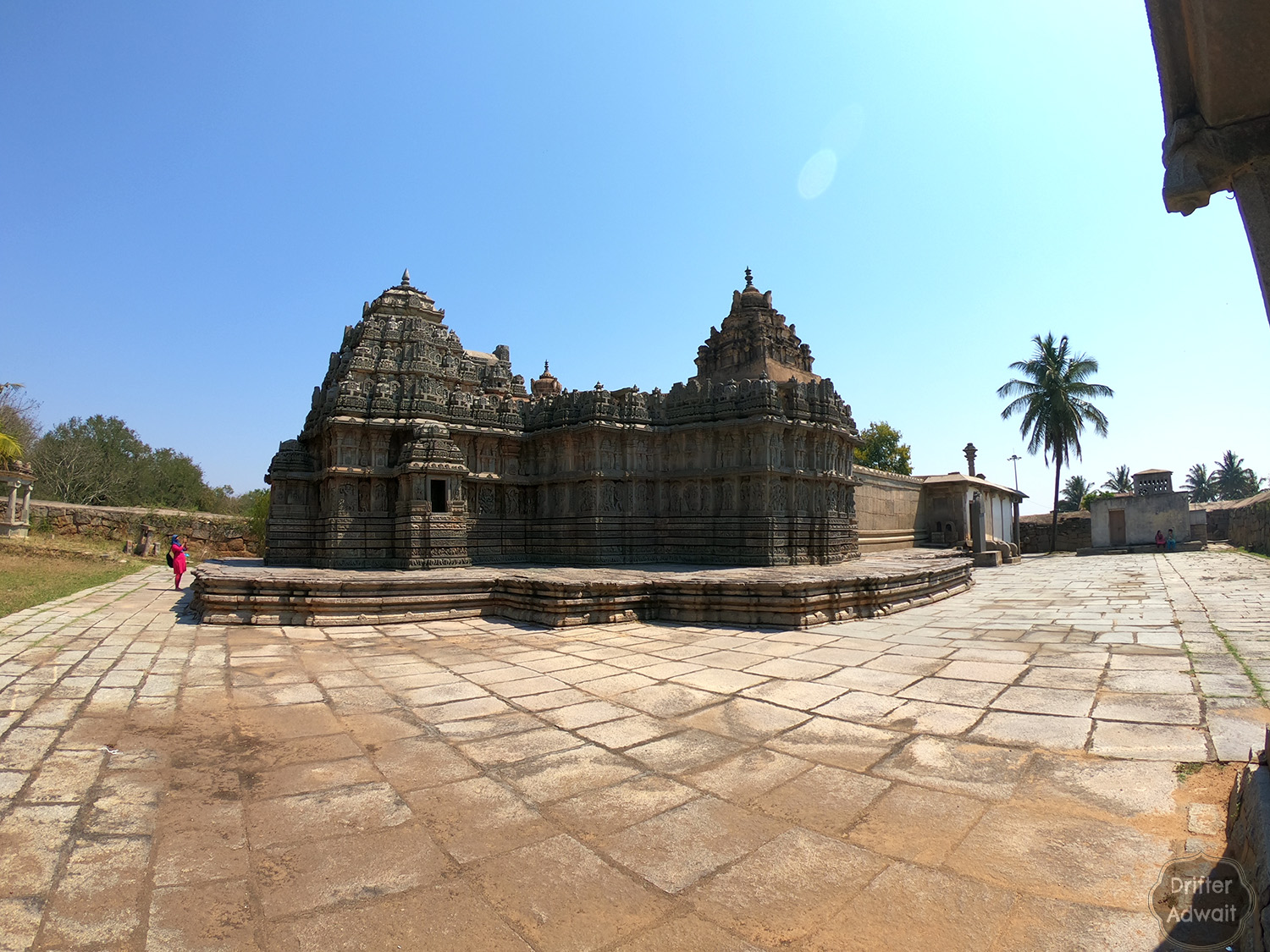
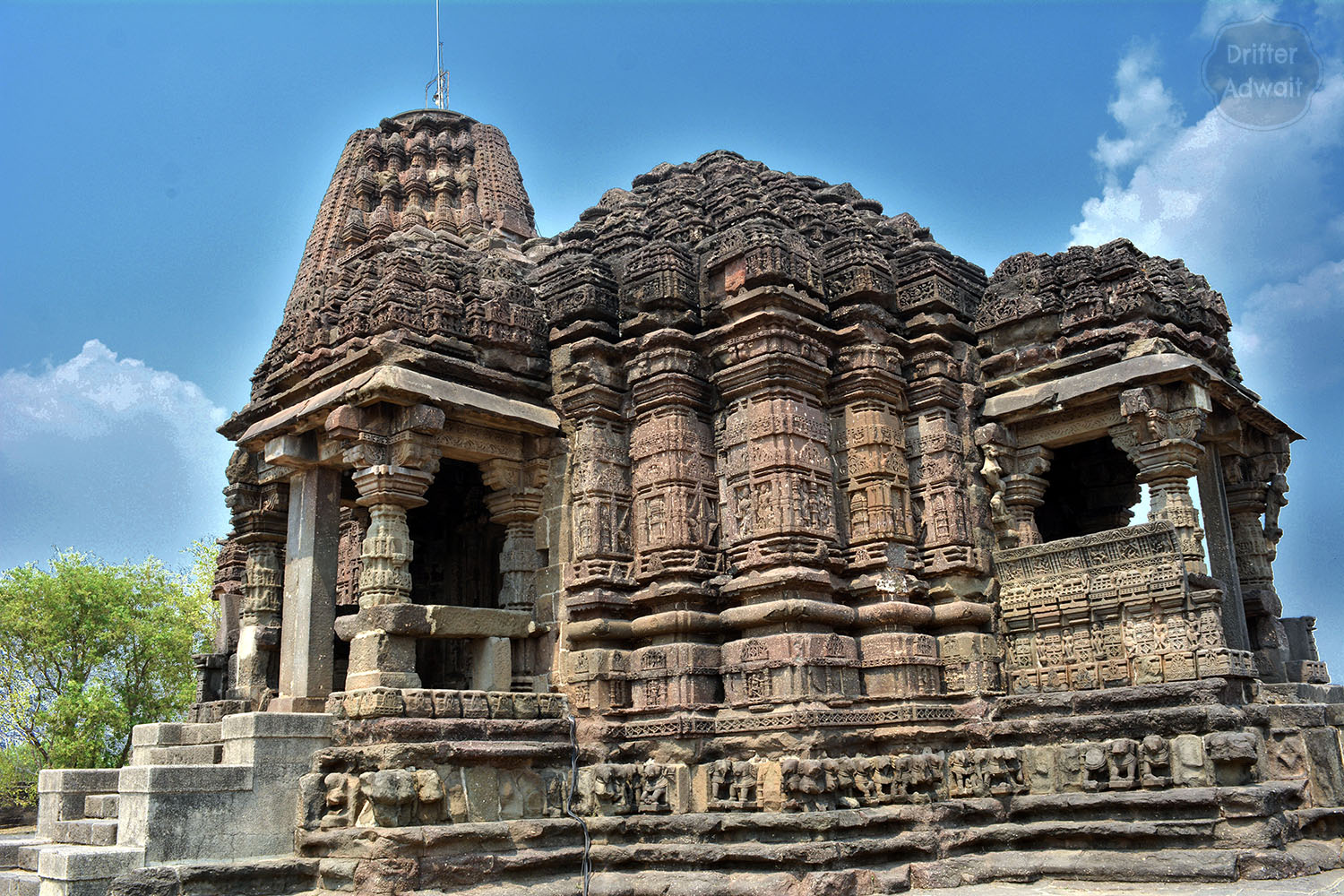

Thanks for the post!
I appreciate for reading it.